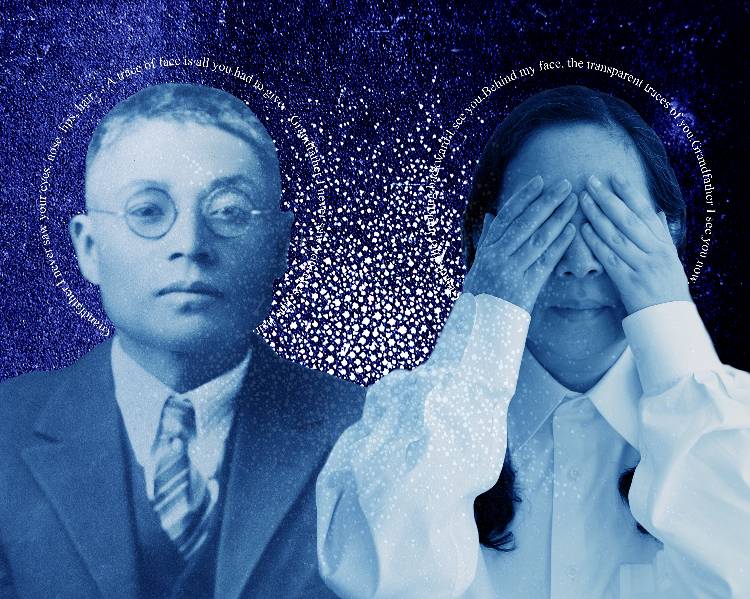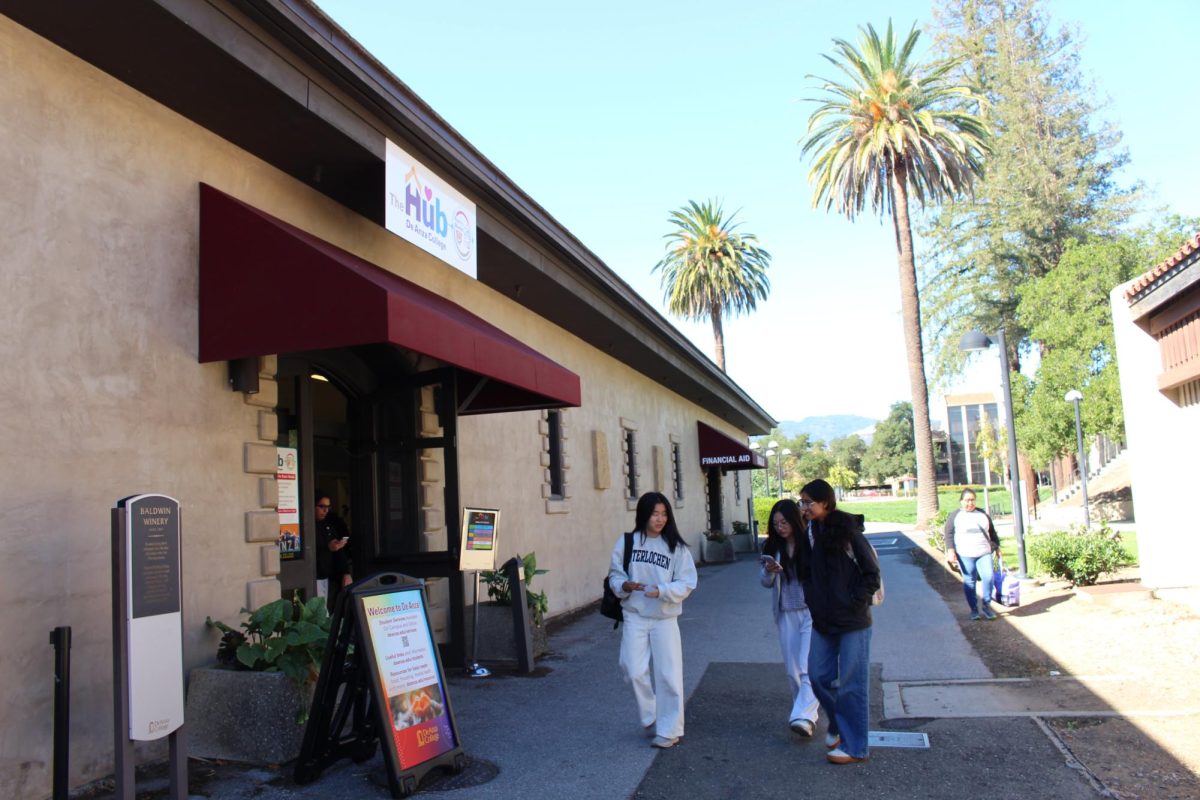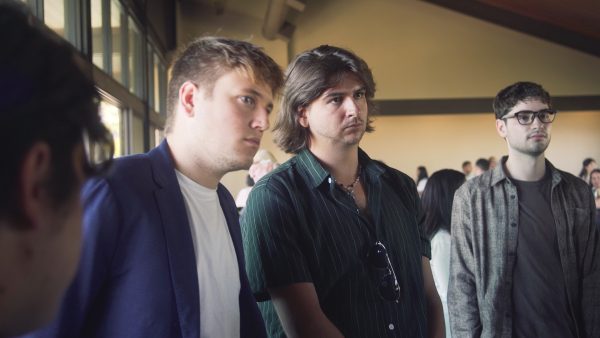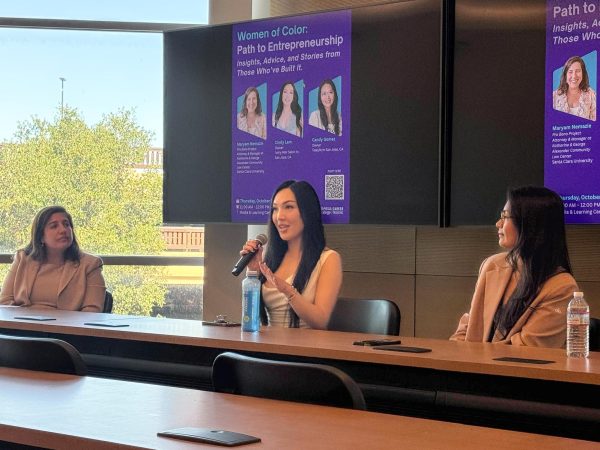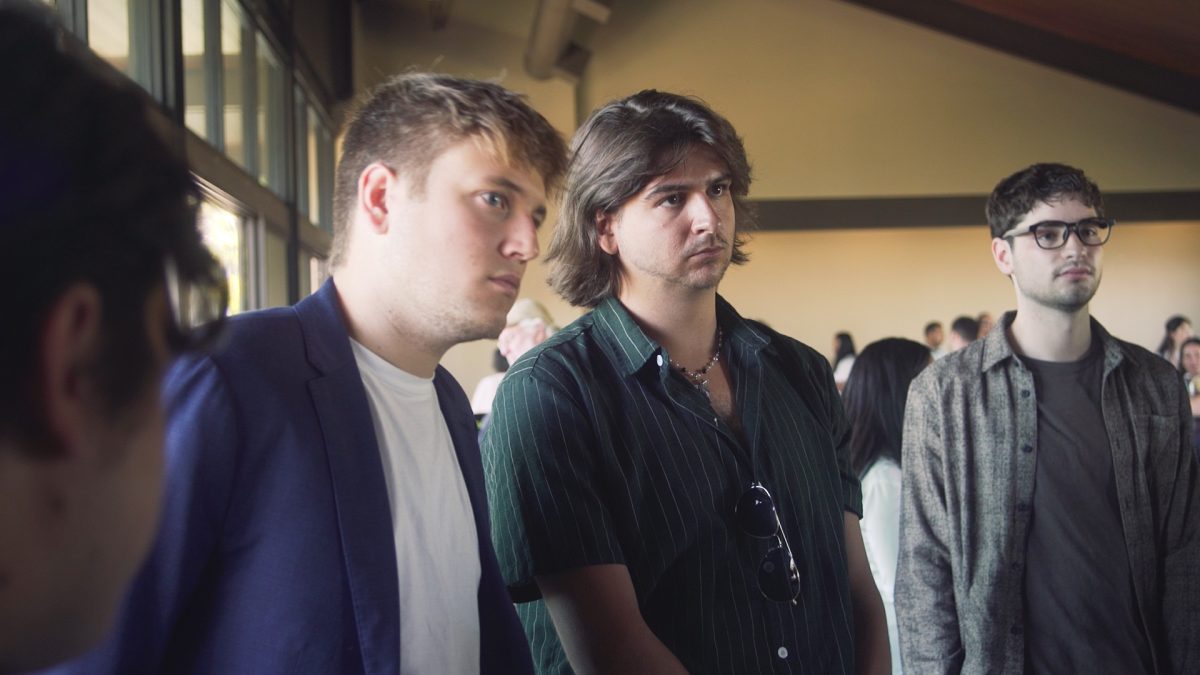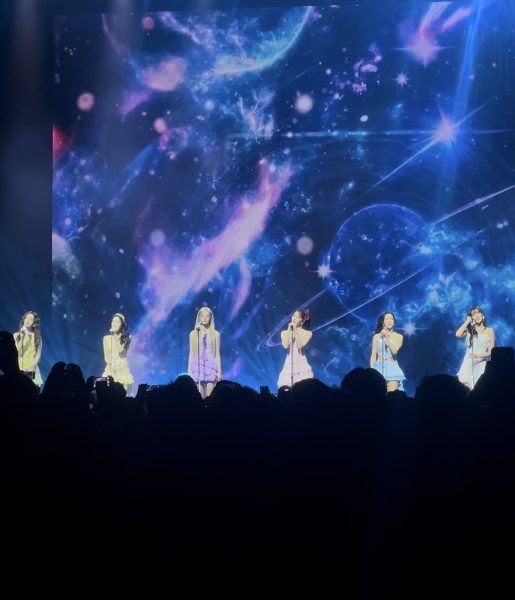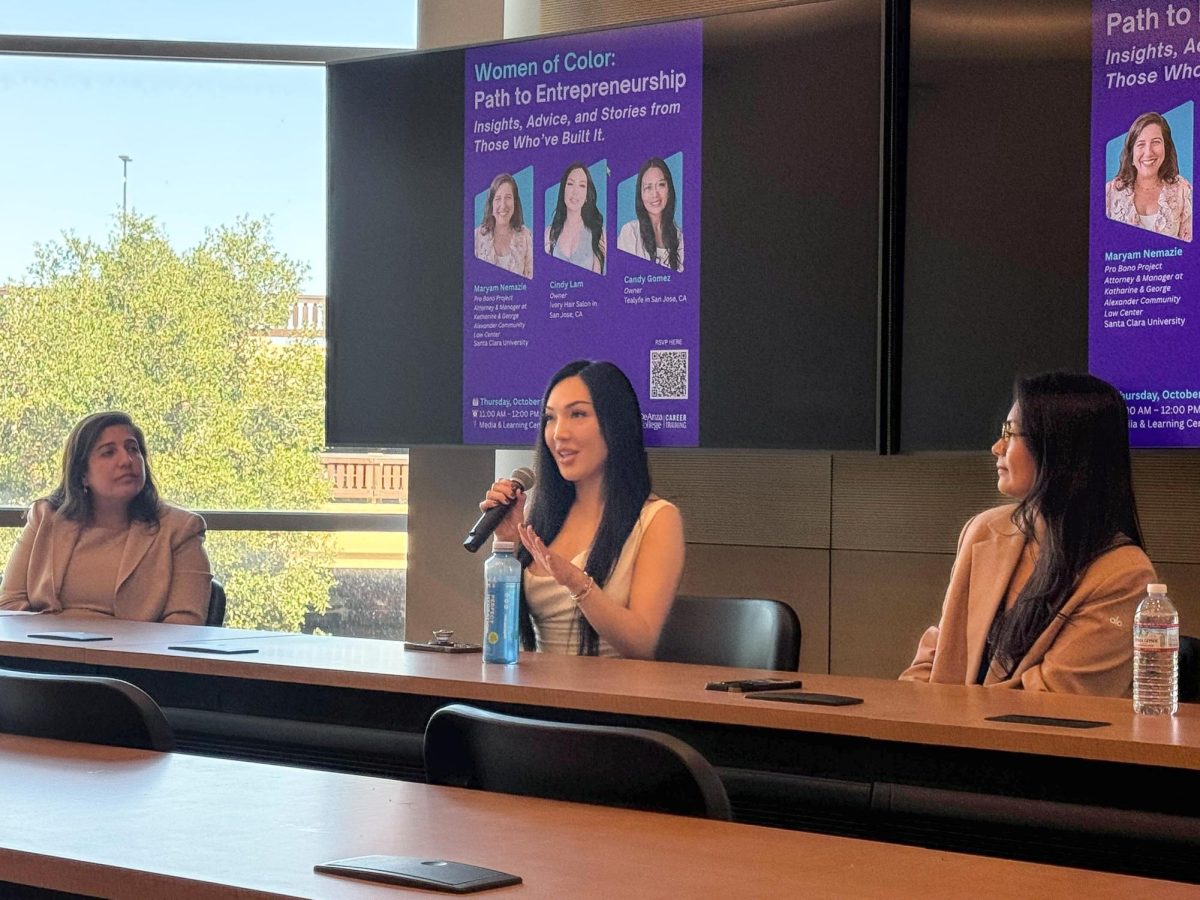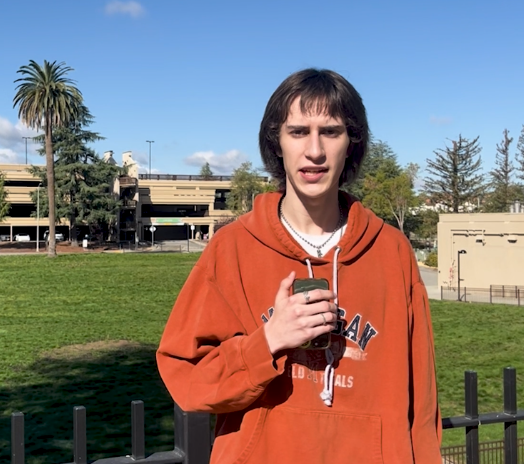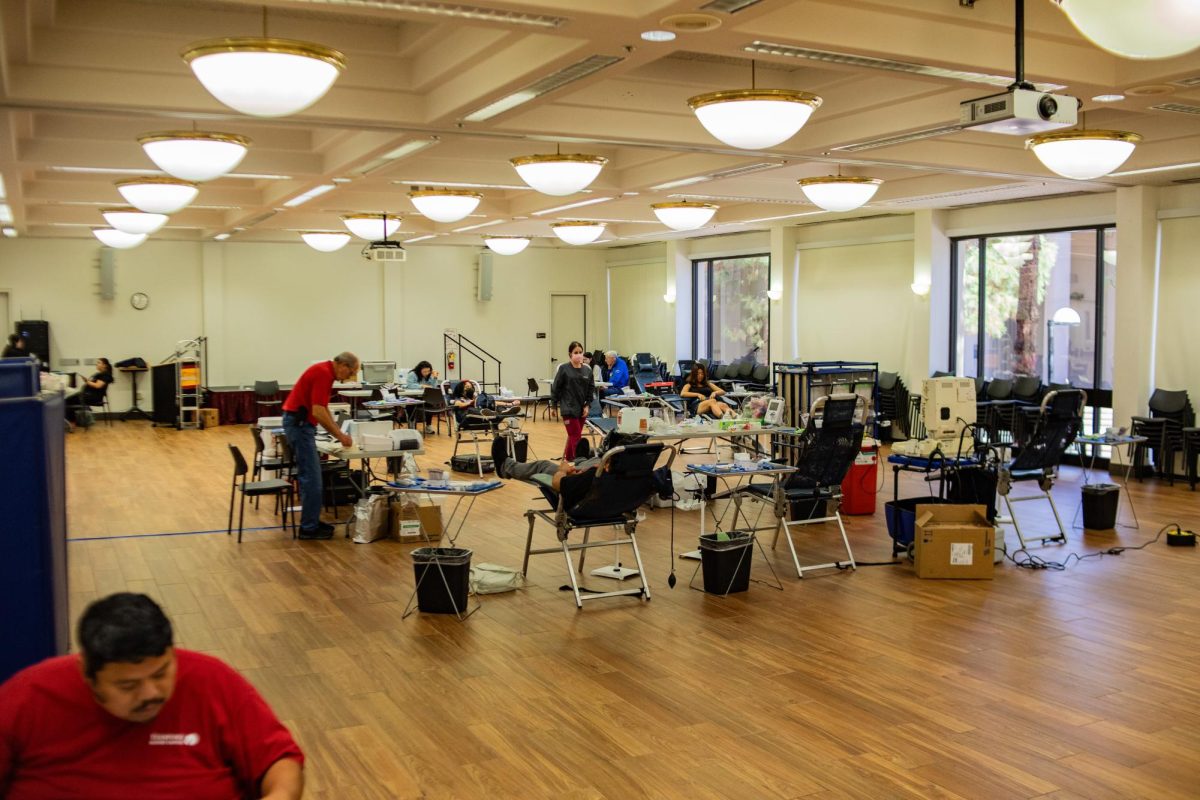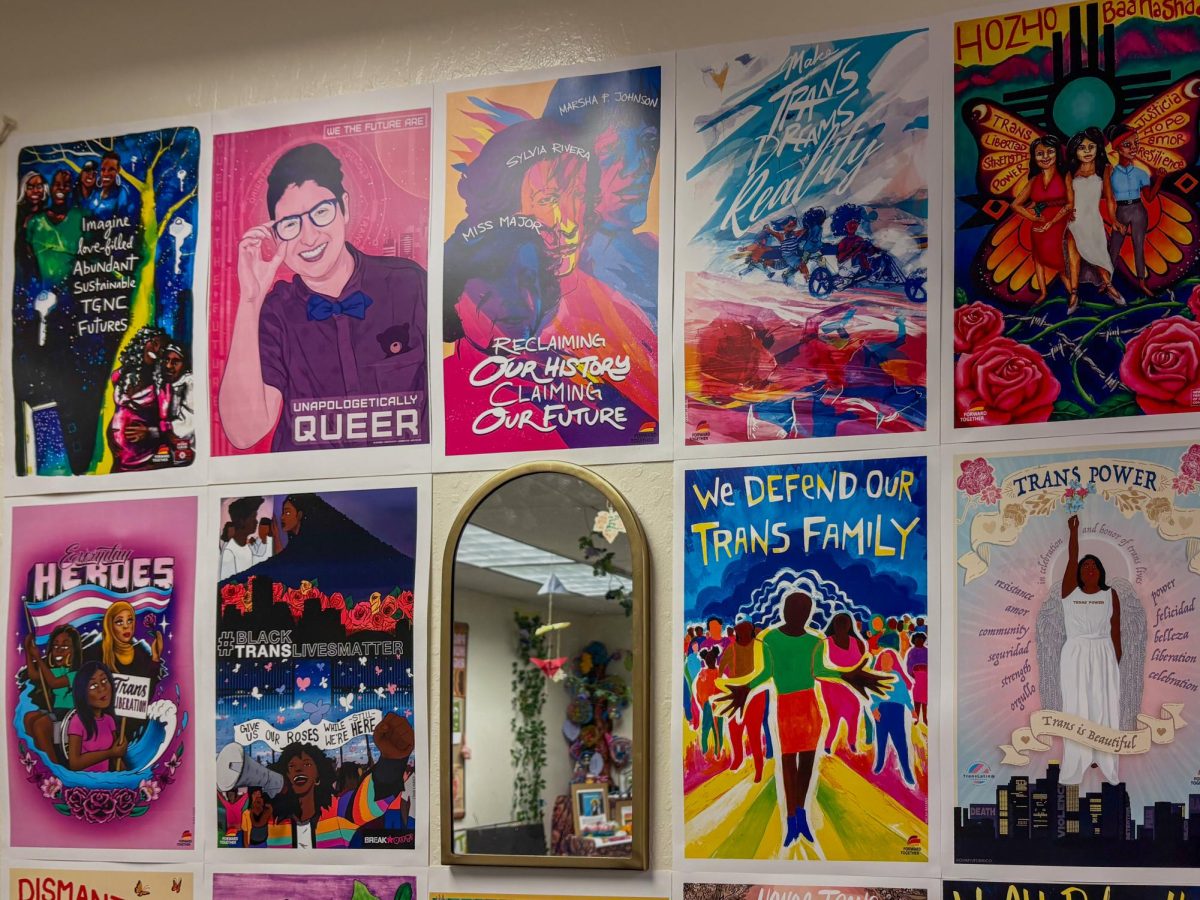Euphrat Museum exhibit sheds light family lineage
Via deanza.edu/euphrat/exhibitions
Inside Behind: Grandfather Tanaka/Me Artist: Gayle Tanaka, 2017
February 26, 2019
“Hold on, let me plug in the boat,” said Diana Argabrite, Director of the Euphrat Museum of Art. We watch, breathless, as a 15-foot-tall rowboat stutters and revolves in place.
Entitled “Portunis”, Eric Powell’s installation dominates the center of the room, and is held in place from floor to ceiling by an iron frame.
It is a dramatic introduction to this year’s Silicon Valley Reads exhibit, “Ancestral Journeys”.
For eight years, Argabrite has been collaborating with Silicon Valley Reads, an arts and cultural community program.
“Ancestral Journeys” explores the different paths artists have gone to understand their family’s history.

“Finding Myself Everywhere” by Trinh Mai. Graphite, remnants of Grandmother’s sewing patterns, hand embroidery on paper.
Trinh Mai’s glass kimono with glass-framed family portraits invites visitors to place themselves in her shoes.
Kija Lucas’ contribution explores her family’s migration, from slavery to emancipation.
Lucas connects her family’s experience by photographing and categorizing plants and soil that represent different stages in life and in the evolution of her family.
Rodney Ewing comments on the gentrification of Japanese and African-Americans and how that obliterates the legacy of the people who lived their before.
On silkscreen, Ewing superimposes images of African-American soldiers and Japanese-American schoolchildren together.
Ewing describes the unique echoes of these histories and how the tech boom and gentrification obliterates the physical testimony of those times.
Beside their installation, Cynthia Zhou’s piece is a long canvas with an outline of a body, fans, coat hangers and gloves.
This specific art is usually done with only two colors, blue and white, and is manipulated by sun exposure.

Artist Trinh Mai discusses her work, “Begins With Tea” which is made from family photos printed on joss paper, grains, seeds, herbs and dried noodles from Grandmother’s kitchen, Grandmother’s used tea bags.
Zhou painted the canvas and silhouettes before using herself as a tool and posing, on the canvas, as the sun etched her outline.
According to Argabrite, the installation is “fuzzy and abstract” and reflects Zhou’s feelings about her newly discovered heritage.
The collection’s mixture of old and new, of innovative techniques breathing new life into ancient tradition, creates an ambience that is both awe-inspiring and humbling.
Not only does Argabrite celebrate ancestors in this collection, she said how important it was to exhibit the next generation of artists as they forge their own identities.



